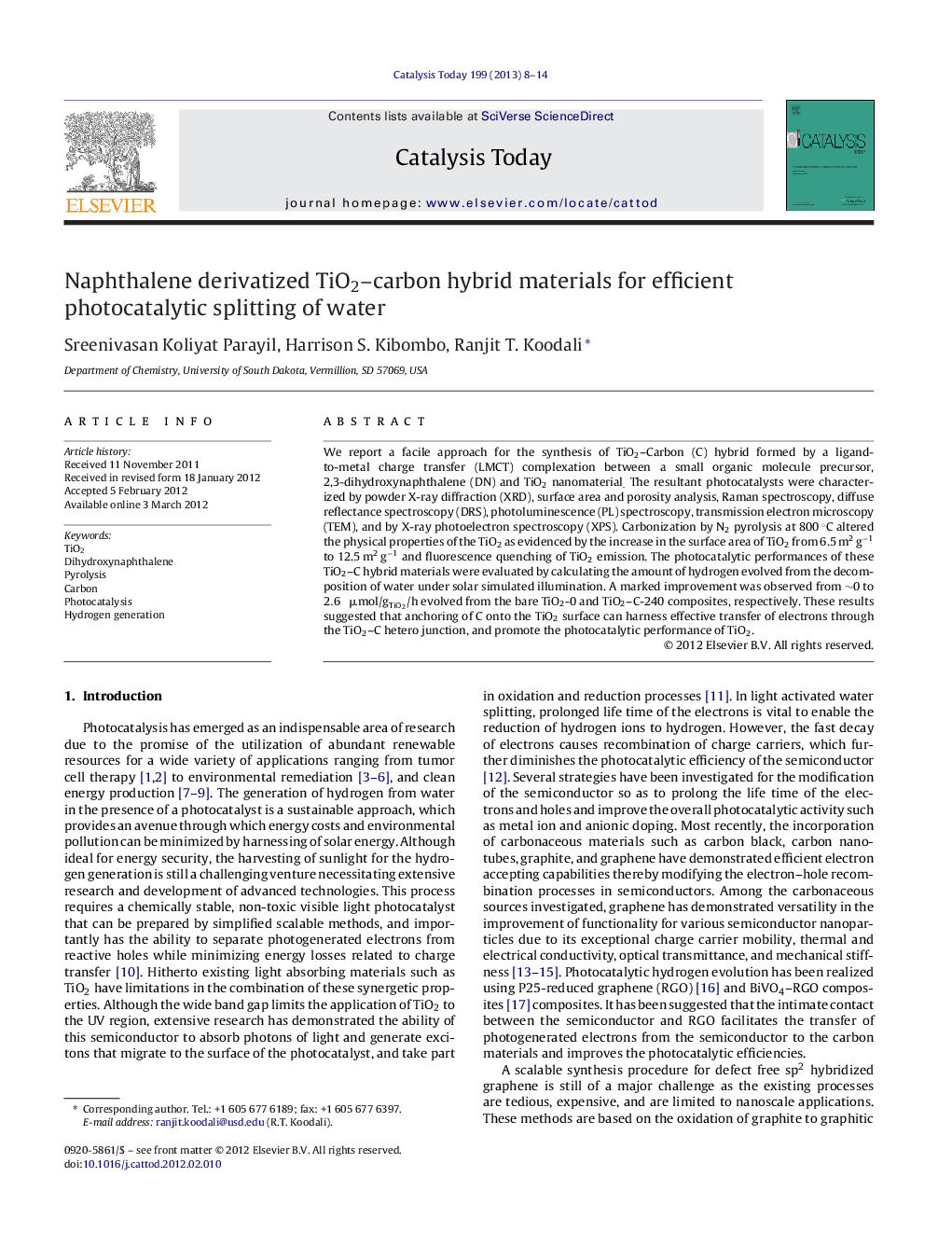| Article ID | Journal | Published Year | Pages | File Type |
|---|---|---|---|---|
| 54979 | Catalysis Today | 2013 | 7 Pages |
We report a facile approach for the synthesis of TiO2–Carbon (C) hybrid formed by a ligand-to-metal charge transfer (LMCT) complexation between a small organic molecule precursor, 2,3-dihydroxynaphthalene (DN) and TiO2 nanomaterial. The resultant photocatalysts were characterized by powder X-ray diffraction (XRD), surface area and porosity analysis, Raman spectroscopy, diffuse reflectance spectroscopy (DRS), photoluminescence (PL) spectroscopy, transmission electron microscopy (TEM), and by X-ray photoelectron spectroscopy (XPS). Carbonization by N2 pyrolysis at 800 °C altered the physical properties of the TiO2 as evidenced by the increase in the surface area of TiO2 from 6.5 m2 g−1 to 12.5 m2 g−1 and fluorescence quenching of TiO2 emission. The photocatalytic performances of these TiO2–C hybrid materials were evaluated by calculating the amount of hydrogen evolved from the decomposition of water under solar simulated illumination. A marked improvement was observed from ∼0 to 2.6 μmol/gTiO2/h evolved from the bare TiO2-0 and TiO2–C-240 composites, respectively. These results suggested that anchoring of C onto the TiO2 surface can harness effective transfer of electrons through the TiO2–C hetero junction, and promote the photocatalytic performance of TiO2.
Graphical abstractFigure optionsDownload full-size imageDownload high-quality image (117 K)Download as PowerPoint slideHighlights► 2,3-Dihydroxynaphthalene precursor for the carbonization of TiO2 nanoparticles. ► Hydrothermal treatment for the synthesis of highly crystalline TiO2. ► N2 pyrolysis for the deposition of carbonaceous material onto TiO2. ► Resultant photocatalysts used for splitting of water under solar simulated irradiation.
